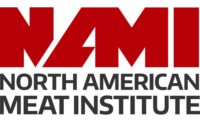State of the Industry: Overview
Meat and poultry industries resilient in face of challenges
Despite a spate of issues and detractors, the meat industry has been able to produce encouraging results this year.

Any discussion of today’s meat industry situation must begin with a sobering preamble concerning the challenges we face. The U.S. cattle inventory is at its lowest level since 1951, and nearly 35 percent of the contiguous United States is gripped in unrelenting drought. At the same time, the pork sector is suffering heavy losses due to Porcine Epidemic Diarrhea virus (PEDv), and country-of-origin labeling (COOL) costs are squeezing margins as everyone makes the changes necessary to accommodate the onerous rules now in effect.
These troubles have caused retail prices to be on a steady incline, reaching what are now historic highs, even after adjusting for inflation. Pork prices in July 2014 were up 10.9 percent from a year prior. Beef and veal prices increased 10.4 percent in the same period. The USDA Economic Research Service’s most recent estimates indicate this upward trend will likely continue, at least until the weather ameliorates.

How soon will weather improve? Not soon enough. Much of California is in a state of “exceptional drought,” the most severe designation possible by the U.S. Drought Monitor. Meanwhile, Texas continues to suffer, and, despite recent rains, Arizona and a few other states are entering dry territory, as well.
All that said, there is plenty of good news this year. For one thing, the increases in retail prices have not greatly lowered sales. In fact, the public is still very well inclined toward both pork and beef. Analysts say consumers are spending more to get the same amount of meat or spending the same to get less meat, but they aren’t spending less. U.S. meat exports have also been solid, with beef up 3 percent on year-to-date totals and pork up 7 percent in recent data from the Meat Export Federation.
Another huge positive is, it appears saturated fat will be exonerated at long last. The case against “artery clogging” lipids is being revealed as not very sound, and the many health benefits of an animal-protein diet are finally being given the credence they deserve. Turns out Julia Child, your grandmother and every human who ever tucked into a steak without worry about his or her arterial fitness was probably right, and government and healthy-eating advocates may even have done more harm than good by stressing over fat content.
To borrow a line from the movie, “The Princess Bride”: “You keep using that word. I do not think it means what you think it means.” To people who have been struggling most of their lives to eat a “heart healthy” diet, it may be frustrating to discover how much they have been misdirected. In fact, it’s great news for everyone, not just the meat industry, because it means nutritional science isn’t stuck anymore on the fat-makes-you-fat mantra.
“When Americans were placed on a low-fat diet in the 1970s, the scientific evidence behind it was thin,” writes Nina Teicholz, author of The New York Times bestseller, “The Big Fat Surprise: Why Butter, Meat & Cheese Belong in a Healthy Diet”, and a speaker at North American Meat Association’s recent Outlook Conference. “Yet, desperate to combat the nation’s epidemics of heart disease and cancer, the scientific establishment rallied behind the low-fat dogma. And the idea that eating fat makes you fat has long had a certain intuitive appeal. Ever since, challenging the conventional wisdom on dietary fat has been a form of professional suicide for nutrition experts.”
That the anti-fat view of human nutrition might be on its way out clears the way for a more rational regime.
Of course, that does not guarantee a new paradigm is imminent nor does that assure its reasonability, but there is a glimmer of hope. And even now the Dietary Guidelines Advisory Committee (DGAC) is diligently working to develop the latest recommendations for the next edition of the Dietary Guidelines for Americans. Unfortunately, the DGAC has shown an increasing interest in exploring issues well beyond what can logically be considered dietary nutrition.
Current DGAC chair Barbara Millen has redefined the committee’s field of inquiry to include not just food and nutrition but also sustainability and related topics. There is now an entire subcommittee devoted to Food Sustainability and Safety. Delving into territory that has nothing to do with nutrition will do nothing to benefit the effectiveness of the Dietary Guidelines, and is altogether likely to obscure and divert from their true course.
“This mission creep is problematic both because it moves beyond the DGAC’s stated mandate, which is to focus on the relationship between nutrition and health, and also because in the process of expanding its mission, the DGAC will dilute attention from the guidelines that will help improve Americans’ diets,” independent research organization the Hudson Institute explained in a recent critique of the committee’s direction.
Furthermore, the industry’s other critics certainly have not gone silent. Anti-agriculture activists and crusaders are finding new ways to lob rhetorical mud balls on a daily basis, built on little more than innuendo — which nevertheless leave a splattering of confusion in the minds of consumers who may be otherwise unacquainted with our industry. And facts are often insufficient to bleach away the stain.
In short, we face many challenges — drought, capacity shortfalls, spiking prices, indefatigable detractors and a credulous public oft predisposed against us. In the midst of this upheaval, the industry must come together to be better positioned and unified in mission and voice. These are difficult days; the only way to face them is boldly.
Looking for a reprint of this article?
From high-res PDFs to custom plaques, order your copy today!





